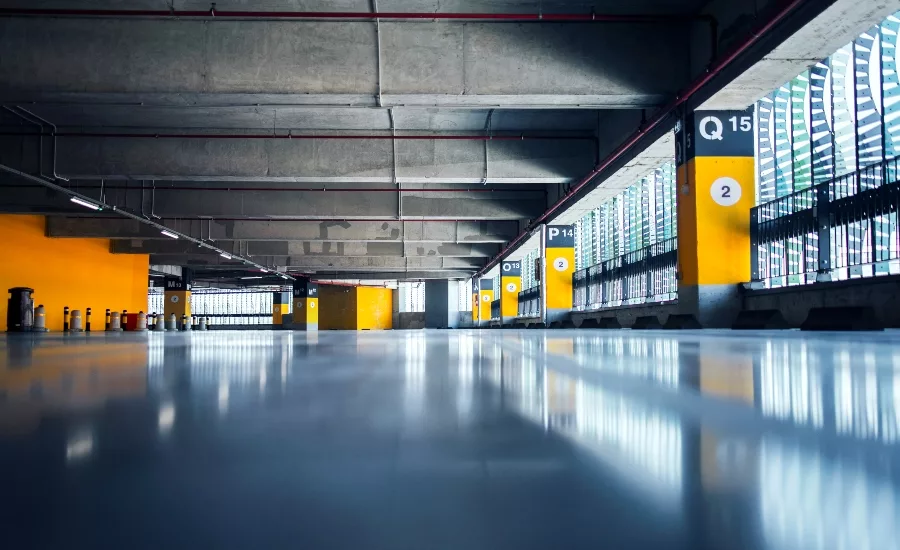3 ways video surveillance can boost parking lot security

Parking lots didn’t get much love during the pandemic. But now that people are venturing outside again for work and play, parking lots are seeing more action than they have in over a year.
But not all of it is good.
As the world opens up and the routines of normal life return, criminals are finding new ways to target individual vehicles and even entire fleets. And, after a year in which economic pressures forced layoffs, many companies are finding themselves short-handed when it comes to keeping up with new safety and security needs.
Thankfully, emerging video surveillance technology can help communities and businesses remain vigilant in the face of emerging threats. Here are three ways these new kinds of technology improve parking lot security—and even help businesses protect their bottom line.
Preventing theft and improving worker safety
In communities across the country, thieves are swiping catalytic converters from cars in hopes of re-selling components like palladium and rhodium, which are valued at record highs. One of the key locations they’re eyeing? Office parking lots.
As workers return to the office, criminals realize that office lots are full of cars that will be unattended for many hours of the day. In some places, they’re able to cut the catalytic converters out of 100 cars in a matter of hours. And employers are starting to realize that liability for these break-ins rests with them.
Traditional video surveillance setups can record footage of the break-ins for future review. But contemporary solutions give employers the power to stop break-ins as they happen. With 24/7 remote surveillance camera systems, employers can set up cameras on their sites but assign monitoring to remote teams off-campus. When those teams spot suspicious and unlawful activity, they can use the system’s connected speakers to broadcast warnings to trespassers and then send an alert to on-site security personnel and local law enforcement.
For one big-box retailer, remote surveillance systems helped drive a 40% reduction in parking lot incidents, with some locations reporting a 70% reduction.
This technology is not only helpful for companies that are responsible for protecting their employees’ property. It’s valuable for protecting the employees themselves. At distribution centers, where workers might be responsible for managing the overnight shift alone, remote surveillance camera systems can ensure that multiple eyes keep fleets of vehicles and workers secure. In those scenarios, the cameras can assure that workers are safely within view and issue an alert when employees are off-screen for prolonged periods.
Adapting to meet changing needs
Another key advantage of newer remote surveillance solutions is their ability to help businesses stay on their toes. As criminals find new ways to be creative, businesses need the flexibility to change their security strategies—from moving cameras to different locations to altering the times of day remote monitors are most active.
Mobile video surveillance setups offer the level of adaptability companies require. If a business catches wind of an impending event, they can temporarily place cameras in the locations with the best viewpoints and access. Or, if they realize that trespassers are taking advantage of a blind spot on their property, they can adjust their setup to prevent further break-ins.
That kind of versatility is especially important now, as the country navigates a dynamic transition out of the pandemic. Community park and ride lots, for example, have seen a surge in criminal activity as commuters return to work. But given that return to office and transit trends are still in flux, communities can’t expect last month’s violations to necessarily define incidents on the horizon.
Stadiums and entertainment venues are also grappling with new traffic and crowd management patterns. Keenly interested in encouraging the public to return to events, sports teams are increasingly invested in the entirety of the fan experience—from the time they pull out of their driveway to the moment they return home.
Mobile surveillance units create the opportunity to monitor and influence traffic activity in real-time, preventing parking lot congestion and reducing safety incidents. Before, during, and after events, security personnel can monitor live streams, coordinate with on-the-ground colleagues and law enforcement to redirect vehicles, and issue alerts about suspicious behavior.
Uncovering critical intelligence
Finally, video surveillance systems can play a powerful role in uncovering valuable information about specific incidents and security trends in general. In the aftermath of break-in or theft, video surveillance units can provide identifying details about trespassers and reveal the full scope of a crime. On an ongoing basis, video surveillance can help businesses and residential areas develop a deeper understanding of their properties’ threat landscape.
For example, homeowner associations are banding together to purchase systems that monitor the ingress and egress of their neighborhoods. While many homes may already have mounted cameras, the video quality is often not high enough to deliver critical information, like license plate numbers. Additionally, in many cases, existing camera systems may not store footage for more than 24 hours. And that time frame isn’t sufficient for investigating car break-ins, hit and runs, or package thefts.
Video surveillance is also helping car rental companies keep up with a recent uptick in demand. As cars enter and depart their lots, rental companies are using surveillance systems to monitor not only car conditions but also to log license plate numbers. From a security standpoint, the technology is helping to protect customers and vehicles. But it’s also serving an operational role by streamlining an otherwise labor- and time-intensive process.
As we continue to ease out of the pandemic in the coming months, parking lot security trends will undoubtedly evolve even more. But the technology and intelligence driving new security solutions are advancing at a rapid pace as well. And, increasingly, they can help businesses not just keep up with but stay ahead of new threats.
Looking for a reprint of this article?
From high-res PDFs to custom plaques, order your copy today!






.webp?height=200&t=1683955002&width=200)


